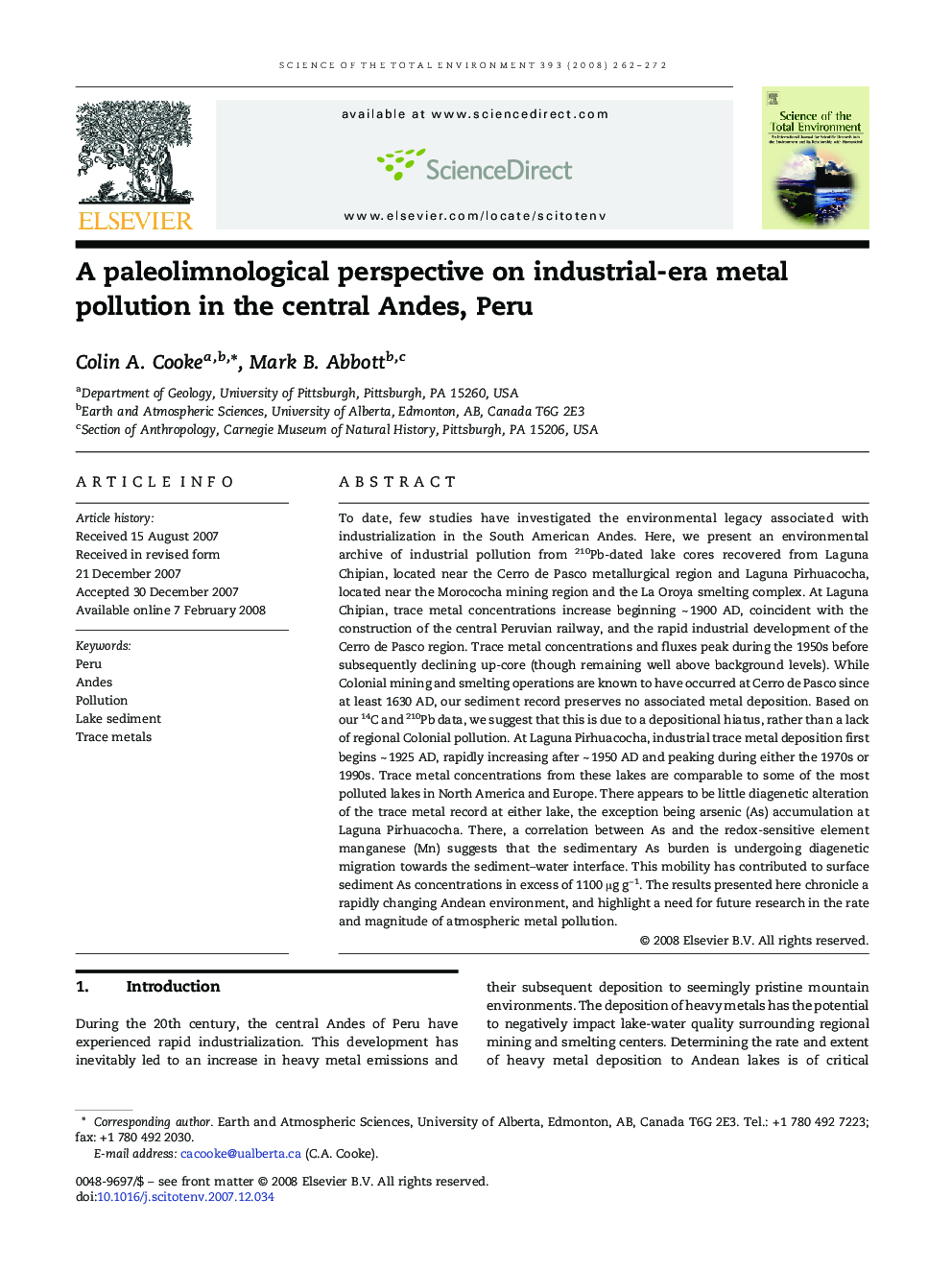| Article ID | Journal | Published Year | Pages | File Type |
|---|---|---|---|---|
| 4432290 | Science of The Total Environment | 2008 | 11 Pages |
Abstract
To date, few studies have investigated the environmental legacy associated with industrialization in the South American Andes. Here, we present an environmental archive of industrial pollution from 210Pb-dated lake cores recovered from Laguna Chipian, located near the Cerro de Pasco metallurgical region and Laguna Pirhuacocha, located near the Morococha mining region and the La Oroya smelting complex. At Laguna Chipian, trace metal concentrations increase beginning ~ 1900 AD, coincident with the construction of the central Peruvian railway, and the rapid industrial development of the Cerro de Pasco region. Trace metal concentrations and fluxes peak during the 1950s before subsequently declining up-core (though remaining well above background levels). While Colonial mining and smelting operations are known to have occurred at Cerro de Pasco since at least 1630 AD, our sediment record preserves no associated metal deposition. Based on our 14C and 210Pb data, we suggest that this is due to a depositional hiatus, rather than a lack of regional Colonial pollution. At Laguna Pirhuacocha, industrial trace metal deposition first begins ~ 1925 AD, rapidly increasing after ~ 1950 AD and peaking during either the 1970s or 1990s. Trace metal concentrations from these lakes are comparable to some of the most polluted lakes in North America and Europe. There appears to be little diagenetic alteration of the trace metal record at either lake, the exception being arsenic (As) accumulation at Laguna Pirhuacocha. There, a correlation between As and the redox-sensitive element manganese (Mn) suggests that the sedimentary As burden is undergoing diagenetic migration towards the sediment-water interface. This mobility has contributed to surface sediment As concentrations in excess of 1100 µg gâ 1. The results presented here chronicle a rapidly changing Andean environment, and highlight a need for future research in the rate and magnitude of atmospheric metal pollution.
Related Topics
Life Sciences
Environmental Science
Environmental Chemistry
Authors
Colin A. Cooke, Mark B. Abbott,
